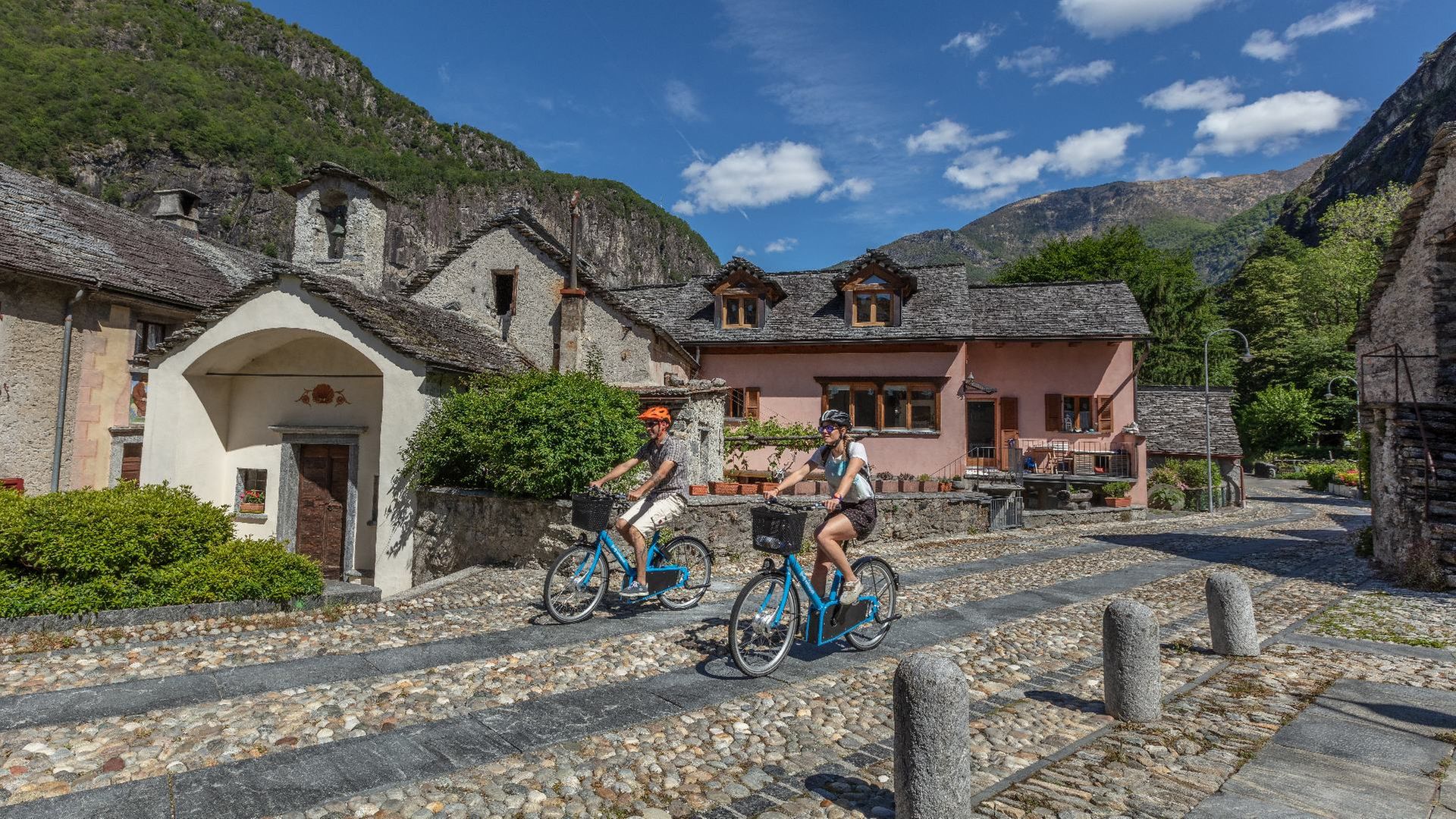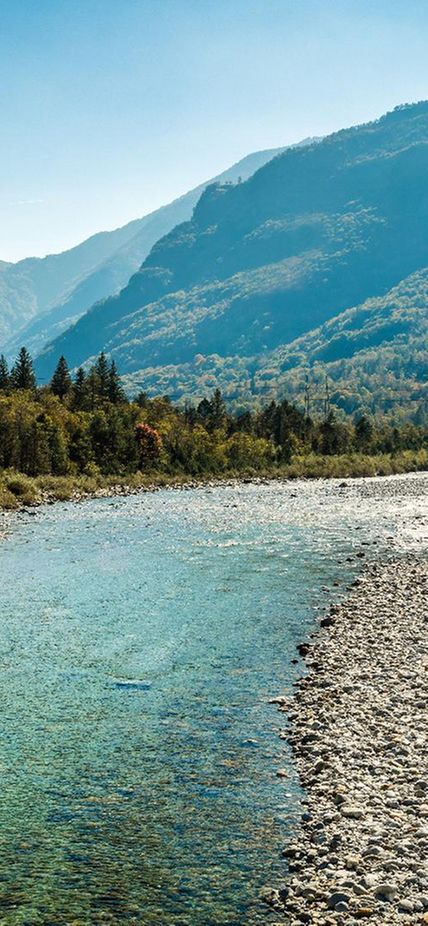Lush green vegetation and pristine nature surrounded by majestic peaks: with its enchanting atmosphere, traditional Ticino villages, history and culture, Vallemaggia is a magical region and an all-season destination for excursions.
The Maggia Valley or Vallemaggia, as it is known by the locals – is defined by many distinctive features and offers countless opportunities for activities. Whether hiking through breathtaking alpine scenery or along the river, cycling through sleepy villages, climbing high above the valley floor, swimming in the Maggia, or enjoying cultural events – this is just a glimpse of what the valley has to offer. The Maggia River, which flows through the entire valley and gives it its name, originates below the Pizzo Cristallina and empties into the Maggia Delta at Lake Maggiore. Over the centuries, it has carved its path, shaping the valley into what it is today – including striking features such as the dramatic granite gorge at the valley’s entrance in Ponte Brolla.
The Vallemaggia is the largest valley in Italian-speaking Switzerland. It includes important and very different side valleys. Turning off in Cevio, halfway up the valley, brings you to the Valle Rovana. Turning left in Cavergno, the last village in the Vallemaggia, takes you to the Val Bavona, while carrying straight on brings you to the Val Lavizzara. There’s also the Valle di Lodano with unique beech forests – an official UNESCO World Heritage Site and home to rare plants and animals.
The Rovana Valley is a steep, narrow valley rich in history, ending in a breathtaking natural amphitheatre. After a long and winding drive, the landscape opens up into a basin, revealing Bosco Gurin – a well-known Walser village. At 1,504 metres above sea level, it is the highest inhabited village in Ticino and the only place in the canton where German is spoken. A hiker’s paradise in summer and a popular ski destination in winter. About halfway up the valley, the road branches off at Cerentino into the Valle di Campo – a hiker’s paradise in summer and a popular destination for snowshoeing and ski touring in winter. The village of Campo Vallemaggia has been part of the international “Mountaineering Villages” initiative since 2025 – a distinction awarded to places whose greatest assets are their authenticity, traditions, and vibrant culture.
The Bavona valley is home to 12 hamlets and offers a journey back in time. This fairytale world is home to traditional stone houses (rustici) with smoke curling from their chimneys, large slabs of rock which served as shelter (splüi), huge boulders transformed into hanging gardens, colourful flower meadows, steep cliffs and waterfalls. With no electricity (except in San Carlo), the valley is inhabited in summer only. The waterfall in Foroglio is a particular attraction: a cascading natural spectacle and a true source of energy.
Lavizzara is the most inhabited of these side valleys. It’s where the world-famous Peccia marble is quarried, Switzerland’s only native marble. Peccia is also home to the International Sculpture Centre, a creative haven that draws artists from around the globe.
Plan your stay
Our chatbot is currently in Beta. Please avoid entering any personal or sensitive data. The provided responses may not always be fully accurate, so we recommend verifying the information received.


